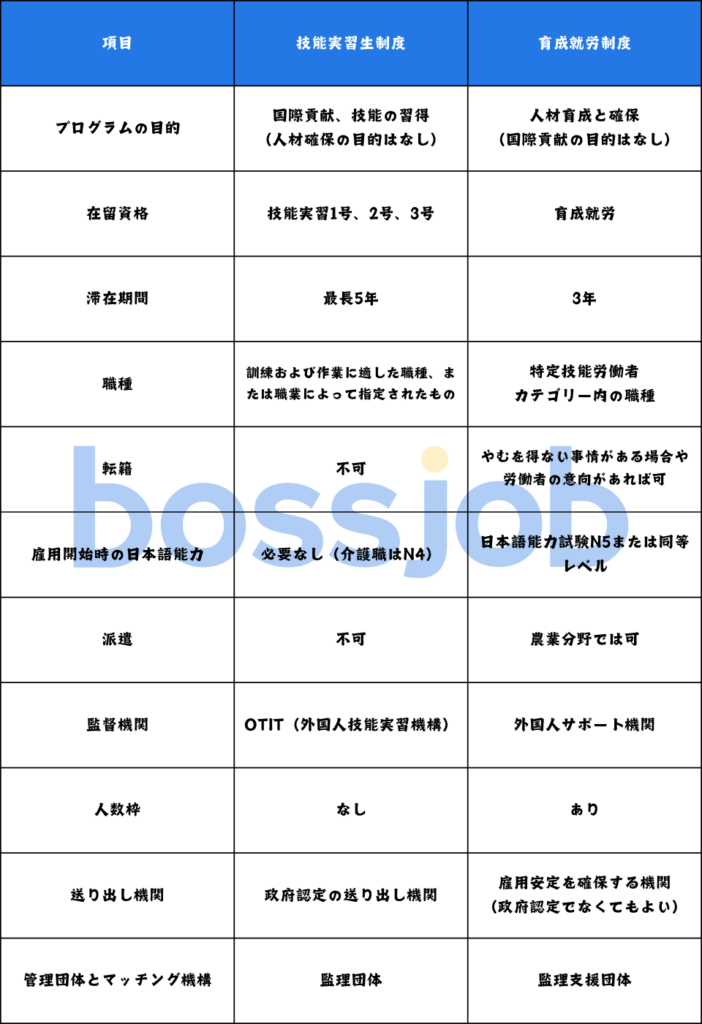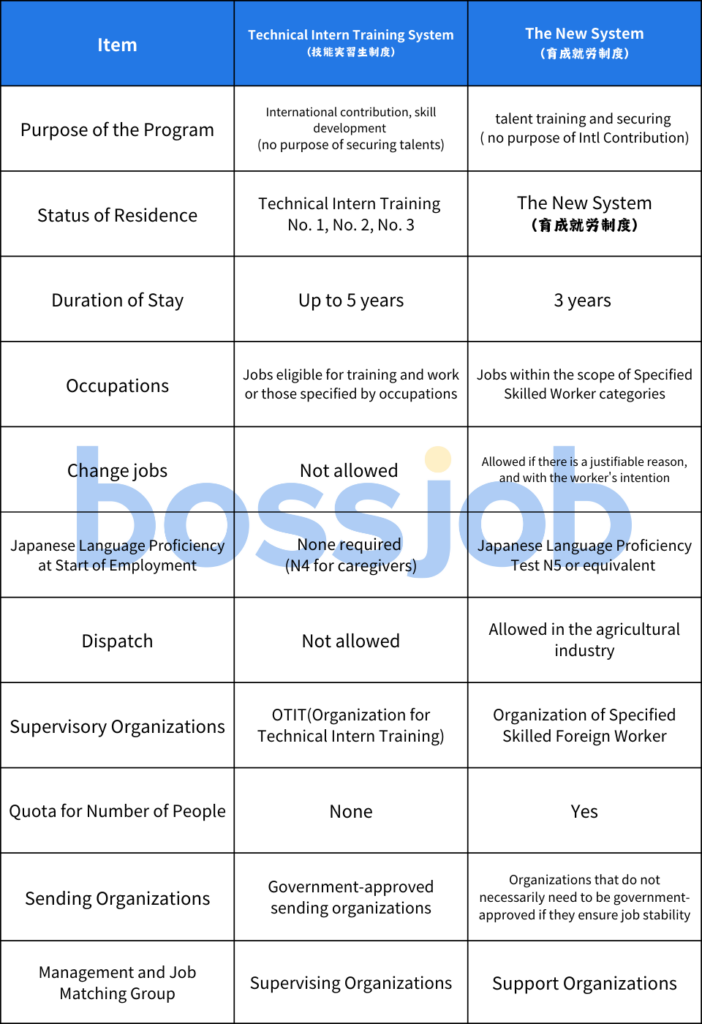2024年6月14日、日本の参議院は出入国管理及び難民認定法の改正を可決し、旧技能実習生制度を廃止し、新しい育成就労制度を成立しました。この新制度は、日本国内での人材獲得と将来的な発展に重点を置いています。
旧制度 – 技能実習
技能実習生制度は、外国人技能労働者が最長5年間日本に滞在することを許可していましたが、滞在期間の延長や職務変更はできませんでした。資格条件は厳しく、監督は技能実習機構(OTIT)によって厳格に行われていました。
新制度 – 育成就労
労働者と専門職の不足に対応するため、新制度では指定技能労働者ビザの取得が容易になりました。初回滞在は最長3年で、その後に特定技能1号に変更することが可能となります。また、やむを得ない事情がある場合や労働者の意図があれば職務変更が認められます。
新制度では資格要件も変更され、日本語能力試験(JLPT)N5または同等レベルで資格を得られるようになりました。監督体制も合理化され、政府承認機関に限らず、外国指定技能労働者の組織が関与することが可能になりました。これにより、外国人労働者が日本で長期的なキャリアを築く可能性が高まります。

技能実習生コミュニティへの影響
技能実習生制度から育成就労制度への移行は、日本の外国人労働者に対するアプローチに大きな変化をもたらします。この新制度は、ビザ取得プロセスを簡素化し、柔軟性とサポートを強化します。職務変更や滞在期間の延長が可能となることで、外国人労働者は日本での長期的なキャリアを見据えることができるようになりました。これにより、技術分野の労働力不足が解消されると期待されています。既存の技能実習生にとっても、安定した長期的な役割への移行が可能となり、キャリア開発と日本社会への統合が進むでしょう。
English Version
On June 14th, 2024, The National Diet of Japan passed an amendment to the Immigration Control and Refugee Recognition Act (日本の出入国管理及び難民認定法), bringing an end to the old Technical Intern Training System (技能実習生制度) and introducing a brand new framework. This new system, known as the training and employment System (育成就労制度), aims to focus more on talent acquisition and labours’ future development within Japan.
The old system
The Technical Intern Training System allowed foreign technical workers to stay in Japan for up to five years. However, there was no possibility of extending the duration of stay or changing jobs. The qualifications for this system were stringent, and the supervision was highly restricted under the Organization for Technical Intern Training (OTIT).
What has changed?
To put a solution to the shortage of workers and professionals in technical areas, the new system offers a simpler pathway to obtaining the specified skilled worker visa, with only 3 years of stay and when obtained qualified skills. Moreover, it provides the flexibility to change jobs if there is a justifiable reason and with the worker’s intention.
Under the new system, the qualification requirements have been changed. Workers now can qualified with a Japanese Language Proficiency Test (JLPT) N5 or an equivalent level. Additionally, the supervision system has become more reasonable, involving organizations of foreign specified skilled workers rather than strictly government-approved entities. This change increases the potential for foreign workers to build long-term careers in Japan.

厚生労働省や出入国管理局や法務省の資料により作成 https://www.mhlw.go.jp/content/12000000/001231483.pdf・https://www.moj.go.jp/isa/content/001415280.pdf
Impact on the Technical Trainee Community
The transition from the Technical Intern Training System to the Specified Skilled Worker System marks a significant shift in Japan’s approach to foreign labor. This new system not only simplifies the visa acquisition process but also offers greater flexibility and support for foreign workers. The ability to change jobs and extend the duration of stay means that foreign workers can now envision longer-term career prospects in Japan, which was previously not possible. This shift is expected to attract more skilled workers to Japan, thereby addressing labor shortages in technical fields. For the existing technical trainee community, this change provides an opportunity to transition into more stable and long-term roles, enhancing their career development and integration into Japanese society.




